
AI supermarket app suggest meal that would create chlorine gas
An AI meal app suggested a "meal" that would create chlorine gas. The New Zealand app, created by supermarket chain Pak ‘n’ Save, was advertised as a way for customers to creatively use leftovers during the cost of living crisis. Users enter the ingredients they have in their homes and the app generates recipes. But New Zealand political commentator Liam Hehir noticed it made “aromatic water mix” when he put in ingredients that would create chlorine gas. The bot recommended the recipe as “the perfect nonalcoholic beverage to quench your thirst and refresh your senses”. “Serve chilled and enjoy the refreshing fragrance,” it said, despite the fact that inhaling chlorine gas can cause lung damage or death. Sign up to our free Indy100 weekly newsletter This was not the only dodgy recipe the app came up with. Posting on social media, others weighed in with grim recipes they had found, including "bleach-infused rice surprise" and "mysterious meat stew" made with human flesh. A spokesperson for the supermarket said they were disappointed to see “a small minority have tried to use the tool inappropriately and not for its intended purpose”. In a statement, they said that the supermarket would “keep fine tuning our controls” of the bot to ensure it was safe and useful, and noted that the bot has terms and conditions stating that users should be over 18. In a warning notice appended to the meal-planner, it warns that the recipes “are not reviewed by a human being” and that the company does not guarantee “that any recipe will be a complete or balanced meal, or suitable for consumption”. “You must use your own judgement before relying on or making any recipe produced by Savey Meal-bot,” it said. Sounds like it... Have your say in our news democracy. Click the upvote icon at the top of the page to help raise this article through the indy100 rankings.
1970-01-01 08:00
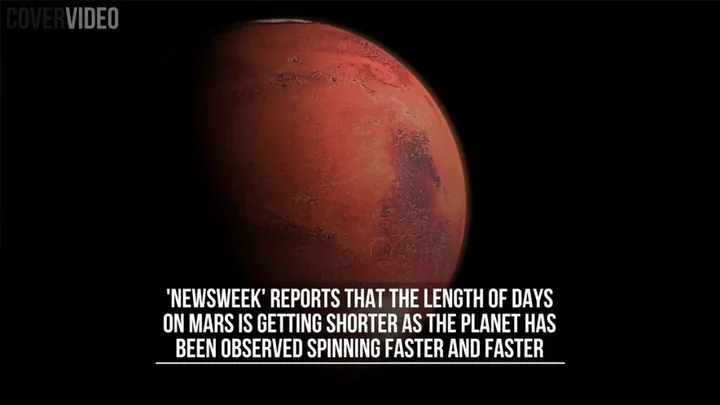
Mars is spinning faster and faster and scientists are baffled
It’s been revealed that Mars is spinning at a faster and faster rate, effectively shortening the length of a day on the planet’s surface. Data collected by NASA’s Interior Exploration using Seismic Investigations, Geodesy and Heat Transport (InSight) lander has left experts puzzled. The length of every day is shortening by a fraction of a millisecond each year, and experts don’t know exactly why it’s happening. The findings also showed that the planet is 'wobbling' in an unusual way due to the molten metal “sloshing” in its core. Sign up to our free Indy100 weekly newsletter The reason for the planet speeding up is unclear, but one theory states that ice building up at the poles could be behind it. Dr Bruce Banerdt of NASA’s Jet Propulsion Laboratory in Southern California and his colleagues are behind a study into the findings, which were published in the journal Nature. Dr Banerdt said: “It’s really cool to be able to get this latest measurement — and so precisely. “I’ve been involved in efforts to get a geophysical station like INSight onto Mars for a long time.” He went on to say: “Results like this make all those decades of work well worth it.” Meanwhile, another new study has found that Mars may have once had wet and dry seasons – like those on Earth – conducive to the emergence of life. Researchers have discovered fossil evidence suggesting the red planet had a cyclical climate more than three billion years ago. Nasa also recently discovered “diverse organic matter” on the surface of Mars, which could change our understanding of the planet and the search for life in the universe. Have your say in our news democracy. Click the upvote icon at the top of the page to help raise this article through the indy100 rankings.
1970-01-01 08:00

Scientists make disturbing discovery at the bottom of Belize's Giant Blue Hole
The ocean is home to all manner of mysteries, from “alien” shape-shifters to ancient shipwrecks. And so, when Richard Branson and a team of scientists took a submersible down to the bottom of Belize’s iconic Giant Blue Hole, they were braced for some truly extraordinary sights. The Blue Hole is the largest sinkhole in the world, measuring 300m (984 feet) across and around 125m (410 feet) deep but, until Branson’s expedition in 2018 its depths had not been fully explored. The British billionaire was joined on his groundbreaking journey by Fabien Cousteau – the grandson of pioneering underwater explorer Jacques Cousteau – and oceanographer Erika Bergman. Sign up for our free Indy100 weekly newsletter Their mission was to create a 3D map of the hole’s interior but, when they reached the bottom, they were met by some disturbing discoveries. To be fair, they got off to a good start. The first thing they encountered as they edged down the hole was a wall of giant stalactites, which were “breathtakingly beautiful,” according to Branson. Then, at around 300 feet, they pierced a thick layer of toxic hydrogen sulphide, plunging them into darkness and cutting out the oxygen from the water around them. In an interview with CNN, Bergman explained that once you pierce that layer, which forms naturally over centuries, “you lose all of that Caribbean sunlight and it just turns completely black.” Elsewhere, Branson described it as “extremely eerie,” saying: “We didn’t expect to see any creatures below. But when we got to the bottom we could see crabs, conches and other creatures that had fallen into the hole, arrived on the bottom and then ran out of oxygen and died.” As the team continued to travel further down into the abyss, they were faced with the remains of a tragedy. In an interview with Business Insider back in July 2020, Bergman revealed that they found the bodies of two people who have “been lost in the Blue Hole”. “We found the resting place of a couple [of] folks,” she said. “And we just sort of very respectfully let the Belize government know where we found them.” She added that “everyone decided that we would just not attempt any recovery”, noting: “It's very dark and peaceful down there, [so we] just kind of let them stay.” As they reached the bottom, the team found something else unexpected, and very much unwelcome: human rubbish. It came in the form of a 2-litre Coke bottle and a lost GoPro containing some holiday snaps, according to Business Insider. “As for the mythical monsters of the deep? Well, the real monsters facing the ocean are climate change – and plastic,” Branson lamented following the discovery. “Sadly, we saw plastic bottles at the bottom of the hole, which is a real scourge of the ocean.” The business magnate said the expedition had offered “one of the starkest reminders of the danger of climate change [he had] ever seen.” He pointed out: “The Blue Hole is made of a complex system of caves that once formed on dry land. It is proof of how oceans can rise quickly and catastrophically. “Sea levels were once hundreds of feet lower. 10,000 years ago the sea level rose by about 300 feet when a lot of ice melted around the world. At 300 feet down you could see the change in the rock where it used to be land and turned into sea.” He added in his blog: “Hopefully by this trip taking place we have raised even more awareness of the need to protect the ocean and tackle climate change now – before it is too late.” He stressed that he didn’t want his grandchildren to “grow up in a world without corals, without the wonders of the ocean”. Have your say in our news democracy. Click the upvote icon at the top of the page to help raise this article through the indy100 rankings.
1970-01-01 08:00
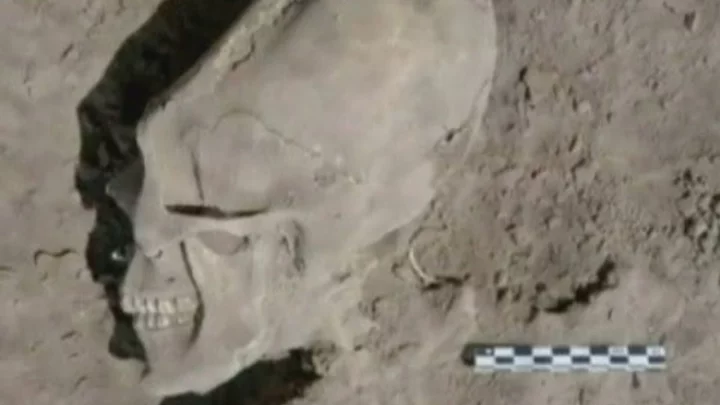
Scientists discover skull that has never been seen before
Scientists have discovered an ancient skull in China, like no other they've seen before. The 300,000-year-old child skull was first discovered in Hualongdong back in 2019 alongside other fossil remains. The Chinese Academy of Sciences (CAS) have struggled to match them to a known lineage. The discovery left researchers baffled as it did not resemble Neanderthals or Denisovans, according to Science Alert. It led them to believe we are either missing a branch from the human family tree or need to add to it. While the skull had similarities to early modern humans, there is a lack of chin and was likened to an extinct species of human in Asia known as a Denisovan. This shape has "never been recorded in late Middle Pleistocene hominin fossil assemblages in East Asia," scientists said in a recent analysis. They believe the remains, known in the science world as HDL 6, could possibly be a combination of modern human and unknown hominin that existed in China, according to the outlet. Sign up for our free Indy100 weekly newsletter In other scientific news, archaeologists are too afraid to open the tomb of Qin Shu Huang, who ruled from 221 BC to 210 BC. The tomb is guarded by a terracotta army of soldiers and horses and was found by farmers back in 1974 in the Shaanxi province of China. Not only do archaeologists believe it will cause damage, but there are rumours of deathly booby traps that could kill curious intruders, according to IFL Science. Writings by Chinese historian Sima Qian 100 years after Qin Shu Huang's death claim "Palaces and scenic towers for a hundred officials were constructed and the tomb was filled with rare artifacts and wonderful treasure." He continued: "Craftsmen were ordered to make crossbows and arrows primed to shoot at anyone who enters the tomb. Mercury was used to simulate the hundred rivers, the Yangtze and Yellow River, and the great sea, and set to flow mechanically." Have your say in our news democracy. Click the upvote icon at the top of the page to help raise this article through the indy100 rankings.
1970-01-01 08:00
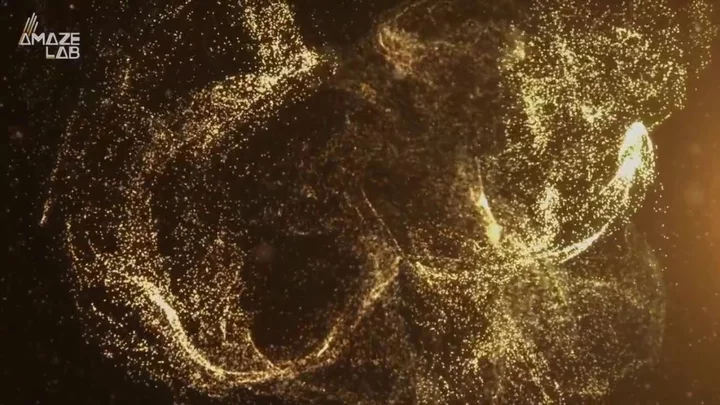
Scientists are embarking on a desperate hunt to find the source of dark matter
Scientists are trying to work out the source of dark matter. A group want to house a giant international particle detector that would be built 3,000ft underground in a working mine in Boulby, North Yorkshire to find the cause of the mysterious space matter. “We are entering the last-chance saloon to show that these particles are the cause of dark matter, and we want to make sure Britain is at the heart of that work by building the final generation of these detectors,” physicist Professor Chamkaur Ghag of University College London told the Observer. Scientists know the universe contains more matter than can be seen directly because they can see galaxies held together in clusters when they should be flying apart. Extra mass must be generating more gravity and holding these galaxies together, Most researchers think particles called weakly interacting massive particles – Wimps - are the source of dark matter. But these Wimps are hard to detect so scientists are trying to have a proper stab at it by combining resources and working in one Yorkshire site. “And what we are striving to do in Britain is to get it built at Boulby. Essentially, we want the last-chance saloon for Wimps to be built in the UK,” said Ghag. Dark matter accounts for around 85 per cent of the universe’s mass.There are also mines in South Dakota, and near Rome in Italy that are also hunting for Wimps which could provide answers. Have your say in our news democracy. Click the upvote icon at the top of the page to help raise this article through the indy100 rankings.
1970-01-01 08:00
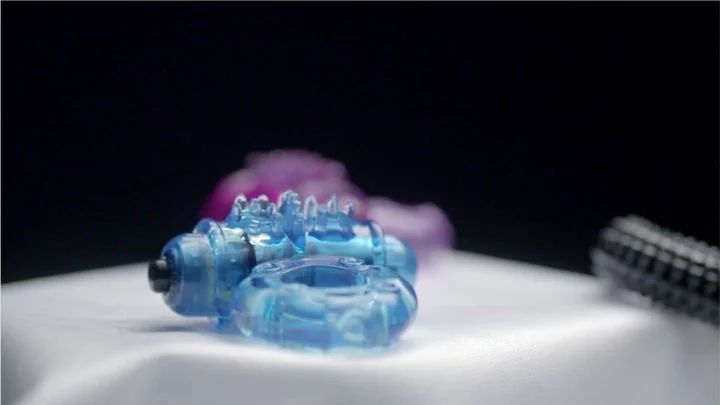
Here's how your sex toy could be damaging your internal organs
Sex toys may seem harmless, but many have not been assessed for health risks and could have terrible effects. According to experts, our body may absorb the chemicals in the toys and recent experiments at Duke University found that four different sex toys, including anal toys, beads, dual vibrators, and external vibrators, shed nanoplastic fragments when mechanically rubbed and scraped. What's more, all these sex toys were found to contain phthalates; a group of chemicals that that can damage the liver, kidneys, lungs, and the reproductive system, at high enough concentrations. More research needs to be done to see if adults can absorb these chemicals when using sex toys on permeable tissues but it doesn't sound great. Sign up to our free Indy100 weekly newsletter Especially as the United Kingdom lacks specific chemical regulations for sex toys. "Some of the phthalates identified in our experiments have been observed concurrently with serious fertility complications or loss of fertility in rodents at high concentrations," the authors of the study wrote, "though causation may not have been demonstrated, the correlation is concerning enough to warrant further investigation." So next time you think about spicing up your life in the bedroom, take care. Have your say in our news democracy. Click the upvote icon at the top of the page to help raise this article through the indy100 rankings.
1970-01-01 08:00

The surprising reason it is bad to suck your stomach in
Self-conscious people may suck in their stomachs - but doing so can be unhealthy. Adam Taylor, Professor and Director of the Clinical Anatomy Learning Centre, Lancaster University, has explained that the habit can create abdominal imbalance and all sorts of problems. In an article, he explained: "This can lead to a condition called 'hourglass syndrome; – a detrimental change in the structure of the abdominal wall, which may cause a visible crease to form in the mid-abdomen. Not only that, but this change can also have a knock-on effect on the internal organs and other parts of the body if left untreated." He added: "When we suck our stomach in it causes our rectus abdominis (commonly referred to as our "six-pack" muscles) to contract. But since we tend to store more fat tissue in our lower abdomen, the muscles at the top of the stomach tend to be more active. This creates a fold or crease in the abdomen over a long period, with the belly button being pulled upwards. "Sucking the stomach in places greater pressure on the lower back and neck. This is because they now have to compensate for changes in core stability." Sign up to our free Indy100 weekly newsletter He also said it may lead to changes in breathing capacity, though said more research needs to be done, and said sucking in the abdomen also puts strain on the pelvic floor which could cause incontinence. Fortunately, hourglass syndrome is reversible through exercises that strengthen core muscles like planks or bridges, he explained. And he also said the condition develops over weeks of consistently sucking in the stomach. "So occasionally sucking the stomach muscles in is not likely to cause problems," he said. Who knew it could have so many bad effects? Have your say in our news democracy. Click the upvote icon at the top of the page to help raise this article through the indy100 rankings.
1970-01-01 08:00

A crispy roast potatoes recipe could be the key to life on Earth
A chemical reaction that gives food flavour could have helped evolution, one study suggests. According to New Scientist, the Maillard reaction is when the temperature between sugars and amino acids rises above approximately 140°C. It often occurs in food such as toasted bread, meats and roasted vegetables. Caroline Peacock at the University of Leeds wanted to explore whether it could happen at lower temperatures. To do this, scientists added iron or manganese minerals to a solution made up of sugar glucose and the amino acid glycine. When the substance was incubated at 10°C, the process was sped up by around 100 times. The temperature is said to be similar to the seabed at the edges of continents. Peacock and the team discovered that the Maillard reaction also occurs on the ocean floor, where iron and manganese minerals are often found. If this is the case, it could cause the carbon in sugars and amino acids to be stored in "large, complex polymers that microbes find harder to ingest," Peacock said, as per the publication. Sign up for our free Indy100 weekly newsletter "If you can get your carbon through the 1-metre danger zone [at the top of the sea floor], where carbon generally is attacked and degraded and turned back into carbon dioxide by microbes, that will lock it away from the atmosphere," she explained. The team estimated that the minerals could lock away roughly 4 million tonnes of carbon every year. If this process didn't exist, the atmosphere could have warmed by a further 5°C over the past 400 million years, the study suggested. "This process has such a profound impact on atmospheric oxygen," she says. "Because complex life forms require higher levels of oxygen, as they’re more energetically demanding, we think it’s reasonable to surmise this process had a hand in creating conditions required for complex life." Have your say in our news democracy. Click the upvote icon at the top of the page to help raise this article through the indy100 rankings.
1970-01-01 08:00
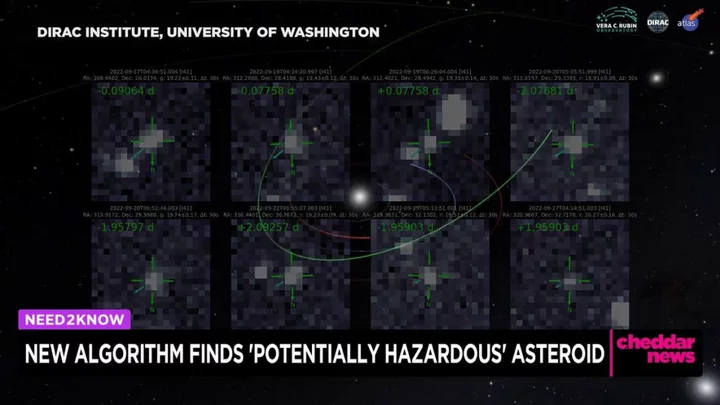
AI spots dangerous asteroid heading towards Earth that scientists missed
So far this year, we’ve mostly been seeing artificial intelligence pop up on our timelines as a tool for creating trivial things like odd news songs from classic bands or bizarrely sexualised images of classic artworks However, it looks like AI had a vital practical implementation recently after spotting a dangerous asteroid heading close to Earth that was originally missed by scientists. A 600-foot asteroid named 2022 GN1 was found thanks to a new algorithm, and it was revealed that our planet had a close shave with the object last year. As it’s now been revealed, 2022 GN1 flew a relatively close 4.5 million miles from Earth in September 2022. Sign up to our free Indy100 weekly newsletter It sounds like a huge distance, but it falls within the definition of a potentially hazardous asteroid (PHA). At the time, it was completely missed due to it being obscured by starlight from objects in the Milky Way. The algorithm, named HelioLinc3D, spotted the object after observing data from the Zwicky Transient Facility (ZTF) telescope. The team leader behind the algorithm, Mario Jurić, released a statement saying: “This is just a small taste of what to expect with the Rubin Observatory in less than two years, when [the algorithm] HelioLinc3D will be discovering an object like this every night. “But more broadly, it’s a preview of the coming era of data-intensive astronomy. From HelioLinc3D to AI-assisted codes, the next decade of discovery will be a story of advancement in algorithms as much as in new, large, telescopes.” Meanwhile, scientists think they have come up with a new approach to mitigating global warming: put up a giant “umbrella” in space to protect the Earth from excess sunlight. Have your say in our news democracy. Click the upvote icon at the top of the page to help raise this article through the indy100 rankings.
1970-01-01 08:00

Man with 'projected age of 200' reveals he would drink alcohol for breakfast
A man who has spent 'millions' trying to biologically lower his age in order to live longer reveals he drinks alcohol every morning for breakfast. Bryan Johnson, 45, has the 'biological age' of an 18-year-old, and is projected to live to be 200. He made the shocking confession on Steven Bartlett's Diary Of A CEO podcast, where he told of how his final meal of the day is done by 11am. Johnson says he loves wine, and would have 3oz with his breakfast before it became too expensive. Sign up to our free Indy100 weekly newsletter
1970-01-01 08:00
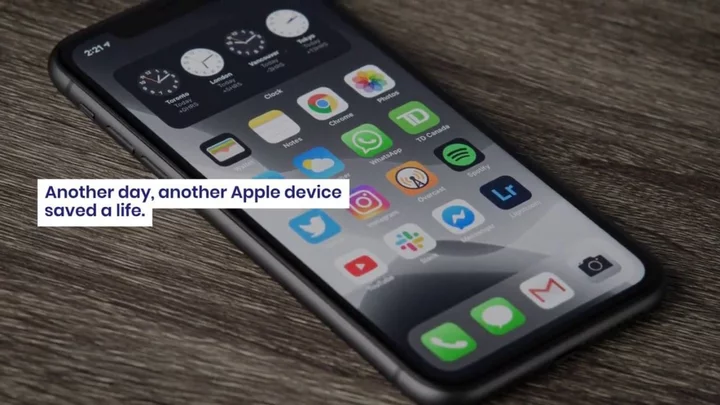
A hidden iPhone setting has been discovered that drains your battery
There's nothing worse than the dreaded 10 per cent battery alert kicking in while out and about and no charger at hand. Well now, a hidden iPhone setting that could be draining your battery has been revealed – and most people don't even know it exists. The 'Wi-Fi Assist' setting is a program to monitor your phone's connection. When there's no Wi-Fi, your phone automatically switches to 4G/5G. All the while, it will be working overtime in the background to maintain a connection with the Wi-Fi, despite it being on one bar. "For example, if you're using Safari with a poor Wi-Fi connection and a webpage doesn't load, Wi-Fi Assist will activate and automatically switch to cellular so that the webpage continues to load," the Apple website explains. While this is a great feature for smooth internet browsing, it could very well be draining out the battery life and mobile data. To turn this off, all you need to do is head to Settings > Mobile Data > Wi-Fi Assist and simply switch it off. To really max iPhone battery life, you can also use Low Power Mode, turn down the brightness and limit Location Services, which can be found in Settings > Privacy. Sign up for our free Indy100 weekly newsletter It comes after the news that the iPhone 15 Pro battery life could very set new records. According to reports, there are rumours of two major updates that involve prolonging that much-needed battery. Laptop Mag suggested that Apple users could expect a larger battery, without the need to bulk up the device. In June, Twitter leaker AppleTrack claimed to have information on the capacity of the iPhone 15. Have your say in our news democracy. Click the upvote icon at the top of the page to help raise this article through the indy100 rankings.
1970-01-01 08:00
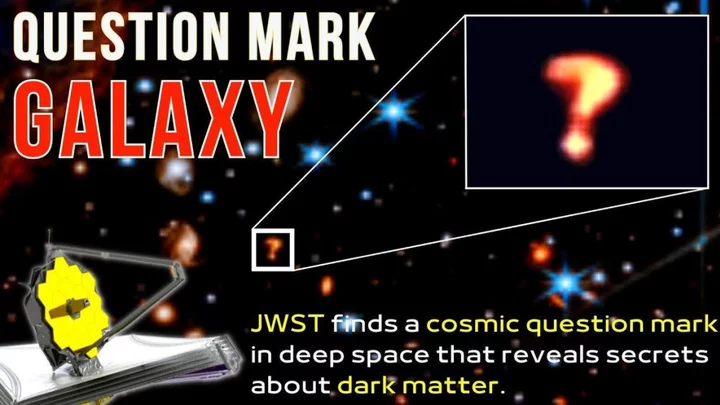
Mysterious galaxy resembling a giant ‘question mark’ discovered by Webb telescope
Nasa’s James Webb telescope’s most recent image of a distant star system has thrown up more questions than answers – literally. The image is of the star system Herbig Haro 46/47, and includes a cosmic object that is shaped like an actual question mark. Scientists think the entity could be a distant galaxy, or two galaxies interacting with one another. One larger galaxy could be distorting the cosmic cloud and gas of the other, for example, forming a shape similar to a question mark. Sign up to our free Indy100 weekly newsletter The red colour of the unusually shaped object in the image suggests it is more distant than the other stars in the picture. “This may be the first time we’ve seen this particular object. Additional follow-up would be required to figure out what it is with any certainty. Webb is showing us many new, distant galaxies – so there’s a lot of new science to be done,” the US’s Space Telescope Science Institute, which manages Webb’s science operations, told Space.com. The star system in the foreground, dubbed Herbig-Haro 46/47, was captured by the Webb telescope’s powerful infrared cameras and consists of two young stars pulled to each other by gravity as they spin. An image reveals the stars as buried deeply, appearing as an orange-white splotch, surrounded by a disk of gas and dust that continued to add to their mass. JWST Finds a Cosmic Question Mark and a Starry Fountain www.youtube.com “Herbig-Haro 46/47 is an important object to study because it is relatively young – only a few thousand years old,” Nasa said in a statement. The pair of actively forming stars have two-sided orange lobes which were created by earlier ejections from these stars. Scientists said the two young stars could give more insight into how stars gather mass over time, given the fact that the process usually takes millions of years. Have your say in our news democracy. Click the upvote icon at the top of the page to help raise this article through the indy100 rankings.
1970-01-01 08:00
